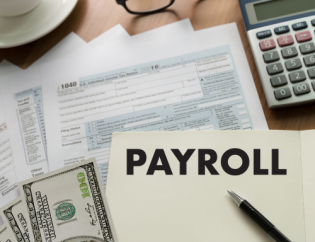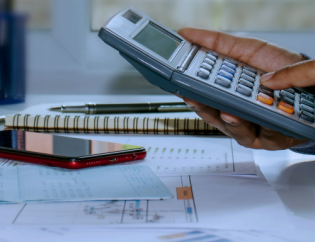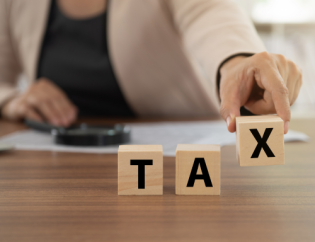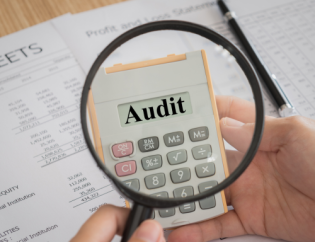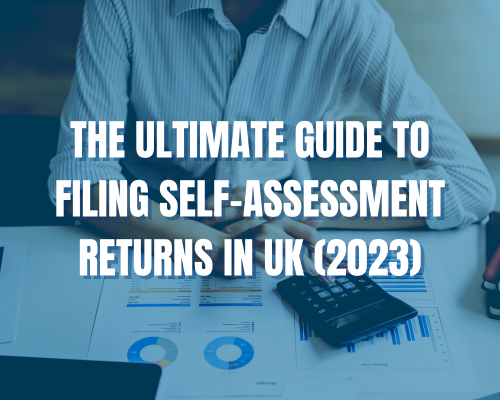
Filing self-assessment tax returns can be an overwhelming and confusing process for many taxpayers, but it doesn’t have to be. Understanding the step-by-step process and following it carefully can help you complete your self-assessment returns accurately and on time, without the fear of making mistakes or facing penalties from HM Revenue and Customs (HMRC). In this comprehensive guide, we will provide you with all the information you need to file your self-assessment returns with confidence. From registering for self-assessment to submitting your tax return to HMRC, we will walk you through the entire process in a clear and concise manner. By the end of this guide, you will be equipped with the knowledge and tools necessary to file your self-assessment returns with ease and avoid any penalties.
Step 1: Sign up for Self Assessment
You must register with HMRC in advance if this is your first time filing a Self Assessment tax return. On the website of HMRC, you can register online. The procedure will differ depending on whether you are self-employed, registering a partnership, or are not self-employed; you should select the one that relates to you.
Step 2: Create a government gateway account and obtain your unique taxpayer reference number (UTR number)
Your limited company or self-assessment registration will trigger the automatic issuance of a UTR number. If you still can’t locate it, you can reach HMRC by phone at 0300 200 3310 and inquire about your UTR number. For security questions, you’ll need to have your personal information and your National Insurance number available. Discover your UTR Number by reading our instructions.
You must create a Government Gateway account in order to submit your Self Assessment tax return online. Simply adhere to the directions in the letter that contains your UTR. An activation code that you receive in the mail after setting up the account will finish setting up your Gateway account.
Do not wait until the last minute because the HMRC advises that the entire process could take up to 20 days. It’s advisable to confirm that you have access to your Gateway account as soon as possible.
Step 3: Verify that the information you’ve gathered is accurate
Make sure you have the following things before you begin:
- Specific Taxpayer Reference for you (UTR)
- All expenses related to self-employment that are recorded under your National Insurance number
- Your P60, P45 if you quit your job during the tax year, your P11D form, which lists any benefits and expenses you may have gotten that wasn’t paid for by your employer through the payroll system, or your P2 coding notice, which outlines your PAYE tax code, are all examples of complete information of income gained from work.
- A total of all rent payments you’ve made
- Certificates from your bank showing the interest you’ve earned
- Any foreign earnings you may have
- Any revenue you earned through a partnership (at least one partner must submit a tax return for the partnership)
- Any profits you’ve made from a partnership (one partner should also file a tax return for the partnership as a whole)
- Specifics regarding any profits received
- Any state benefits that are taxable as well as any capital gains from the sale of assets
- Details regarding any Gift Aid you may have received (you can claim tax back for this – see here for details)
- Information about any pension contributions, as you might be able to get part of this money back.
- Information about any taxes you’ve already paid this year (known as payments on account – more on this here)
The information listed above should only be used in conjunction with the prior tax year, which runs from April 6 of one year to April 5 of the next year.
Step 4: Fill out the sections that apply to you
Only the areas that apply to you need to be completed. By just displaying the areas that apply to your circumstance, Our expert professionals will save you time. Additionally, it uses the data you upload in real-time to complete the application, offering you reminders when there’s a chance of an error or if you might be entitled to any tax breaks.
Step 5: Submit your Tax Return
Take your time and properly complete your tax return. There’s no need to hurry if you’re doing it online because you can always save it and return it.
Before clicking “Submit,” you should review all the data you’ve submitted. You can make changes at any time before this. Once it’s finished, you’ll receive a confirmation and code number. It’s advisable to remember this number so you can use it as a reference in the future.
As soon as your tax return is submitted, the amount you owe will be determined. It’s imperative that you pay it by the due date.
Step 6: Document your tax return
Maintaining a record of your returns is usually a smart idea. You will need to present your receipts, bank statements, etc. as proof if HMRC decides to investigate your tax return. You should retain the records for at least five years and ten months if you’re a landlord or self-employed.
Filing self-assessment tax returns may seem like a daunting task, but it doesn’t have to be. By following the step-by-step process outlined in this guide, you can complete your self-assessment returns accurately and on time, while avoiding any penalties from HMRC. Remember to keep all relevant records and receipts, and to make use of any available resources, such as tax calculators and online help from HMRC. By taking the time to understand and follow the self-assessment process, you can gain control over your tax affairs and avoid unnecessary stress and worry.
Investing in helpful tools like online software or working with accounting professionals excelling in will enable you to upload receipts in real-time and automatically calculate your tax for you, immediately alerting you of any potential errors or opportunities to claim amounts back, which will help you correctly file your tax return online without causing you undue stress.
Need help in filing your Self-Assessment Returns? Dont Worry Acenteus can help!
Contact us for a FREE quote!

